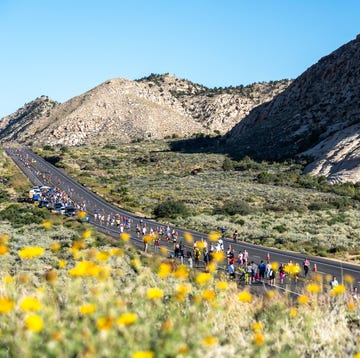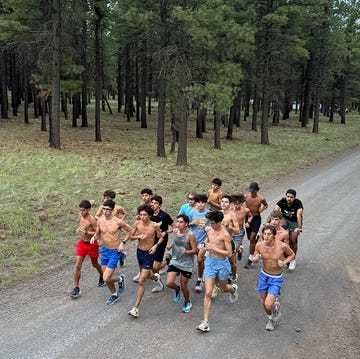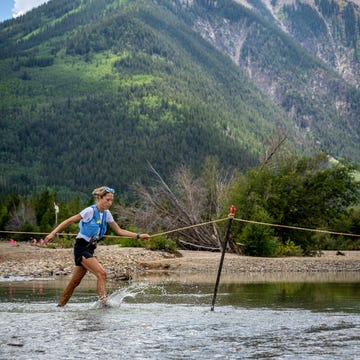On paper, a downhill race sounds like a dream scenario: Gravity does all the work so you can coast to a PR. Unfortunately, that’s not always how it plays out in real life.
I started running downhill races after moving from New York to Colorado in 2019. A few friends told me about a small race outside of Denver called the Slacker Half Marathon—it starts near the Loveland Ski Area and descends 3,000 feet to Georgetown—and I thought I’d smash my half marathon PR with barely any training. The joke was on me; I did set a PR, but my quads were so wrecked I had to walk in the last few miles.
Some runners are drawn to downhill races because they lead to faster times. The Revel race series (which includes White Mountains, Big Cottonwood, Big Bear, and Mt. Charleston), St. George Marathon, Mountains 2 Beach, and more USATF-certified courses feature serious descents and large percentages of finishers who achieve Boston Marathon qualifying times.
➡ Got a marathon in your sights? Try Runner’s World’s How to Master the Marathon training program to run your first or fastest 26.2 ever! We’ll give you all the tools you need to navigate your entire marathon training journey—from picking a race to crushing your long runs.
While you can score a BQ on a downhill course, these races generally aren’t eligible for Olympic Trials qualifying or world records; for an OTQ, the course must have an elevation loss no greater than 3.30 meters per kilometer, while the overall decrease in elevation between the start and finish can’t exceed 1 meter per kilometer for a world record (by those standards, the net downhill Boston Marathon isn’t world record-eligible, either). But the majority of participants in these races aren’t gunning for an OTQ or world record.
I find downhill races to actually require more strategy and specific training than flat races, and it becomes about rising to the challenge. When you’re running downhill, your muscles lengthen as they contract to control your descent, and that eccentric contraction is more stressful on your muscles than running on level terrain. If you’re not prepared for how the slope amplifies your ground reaction forces with each step, soreness could sideline you mid-race. But research has shown that a single downhill run protects against future eccentric muscle damage for weeks, and the more downhill training you do, the greater and longer that effect.
The more downhill running I do—I’ve raced the St. George and Colorado Marathons, and spectacularly destroyed my quads on leg one of the Hood to Coast relay last year—the more I appreciate how much more demanding this kind of running is. Your form has to be dialed in (overstriding means even more impact on your joints; running too upright is a fast track to wrecked knees and lower back strain), and you have to be in control of your pace. If you just let gravity do its thing and pull you out of the gate too fast, your race is going to unravel quickly.
Plus, many of these races start significantly above sea level. The Slacker Half Marathon, for example, has a starting elevation of 10,600 feet. That adds another complicating factor to all of the above; that kind of altitude—the lower oxygen levels in the air decrease your body’s ability to utilize oxygen—can affect your perceived effort, breathing, and fueling.
At the end of the day, 13.1 or 26.2 miles is still 13.1 or 26.2 miles. Whether you’re climbing hills, cruising along flat terrain, or descending steep, your cardiovascular fitness, energy systems, and mental toughness all get tested.
And yet there are people within the running community who insist that all runners will always run faster during downhill races because of physics; never mind the fact that different runners thrive on different courses, and that doesn’t account for variables like weather, fueling, and mental strength. For what it’s worth, I had to return to the Slacker Half Marathon three more times—with more specific downhill training!—to finally run another half marathon PR.
Downhill marathons aren’t a hack. They’re a different kind of challenge—one that demands its own training, strategy, and respect. Telling another runner their PR doesn’t count or that they’re cheating by running a downhill course is just another form of pace-shaming and gate-keeping the running community doesn’t need.














